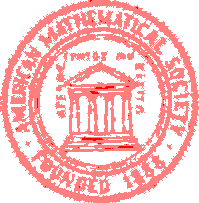Artificial intelligence and machine learning
Research Article
Single-Chip Model for Reverberation Interference Cancelation
Maxim Sergeevich Medvedev1 , Dmitriy Olegovich Nepomnyashchiy2, Anton Gennadievich Khantimirov3
, Dmitriy Olegovich Nepomnyashchiy2, Anton Gennadievich Khantimirov3
| 1-3 | Siberian Federal University, Krasnoyarsk, Russia |
| 1 |
 mmedvedev@sfu-kras.ru mmedvedev@sfu-kras.ru |
Abstract. The problem of reverberation interference cancelation that occurs during low-frequency signal transmission is considered. It is shown that effective solutions can be obtained using a combined approach based on the integration of known adaptive noise reduction algorithms for main noise compensation and machine learning technologies for residual echo suppression. The task of creating a single-chip model for a noise cancelation system implementing the proposed approach is highlighted. The main results of developing mathematical and software models for the proposed method are presented. The application of an fixed point echo state network as a recurrent neural network for computing cepstral coefficients on an FPGA chip is substantiated. The architecture of a single-chip intelligent noise cancelation system is considered. The results of mathematical and software models from the system components are presented. It is shown that as a result of a four-stage experiment, the developed architecture, neural network models, and the proposed interference suppression principle demonstrate both a reduction in the level of reverberation interference on the model compared to known approaches and the possibility of implementing a single-chip calculator in an FPGA basis. The obtained results open new prospects in implementing approaches to interference suppression during low-frequency signal transmission. (In Russian).
Keywords: Interference, neural network, adaptive algorithm, reverberation, FPGA, model
MSC-2020 68T07; 94A12
68T07; 94A12
For citation: Maxim S. Medvedev, Dmitriy O. Nepomnyashchiy, Anton G. Khantimirov. Single-Chip Model for Reverberation Interference Cancelation. Program Systems: Theory and Applications, 2025, 16:4, pp. 155–172. (In Russ.). https://psta.psiras.ru/2025/4_155-172.
Full text of article (PDF): https://psta.psiras.ru/read/psta2025_4_155-172.pdf.
The article was submitted 04.09.2025; approved after reviewing 18.09.2025; accepted for publication 21.09.2025; published online 16.10.2025.


